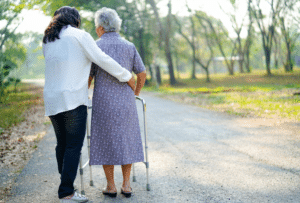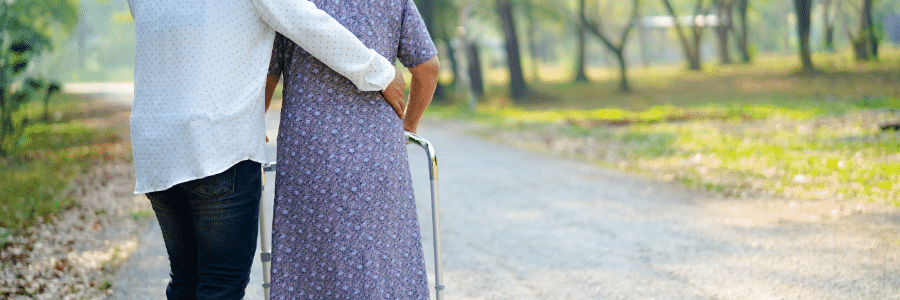Are you providing senior care at home? At some point, you will find that it’s time to adapt your house to be safer for a parent with mobility issues.
Depending on your home and its layout, there may be major adaptations or modifications to make. However, if you start with simple changes, you can have a big impact right away while you plan for the bigger things.

Changes You Can Make Today
There are some easy things you can do today to make home safer for mom or dad. These require little to no structural modification of your home. Small, common-sense changes can make a big impact on how safe your home is for a senior with mobility challenges or balance problems.
Take a walk through your home. Pay close attention to your feet and note any tripping risks. Are there items on the floor that might endanger a person with balance issues, poor night vision, or who uses a cane or walker? Look for and address trip hazards immediately in order to reduce the risk of falls.
Examples of Trip Hazards
Power cords on the floor: Rather than leaving power cords on the floor, tack them to baseboards. Or, move lights and appliances next to outlets so cords are away from high-traffic areas.
Loose area rugs or runners: Area rugs or runners on a hardwood or tile floor can easily slip or hit a cane the wrong way, causing a fall. Remove rugs from areas where your parent or loved one may need to walk at night, such as the route from their bedroom to the bathroom. Anchor rugs or runners that do stay to a sturdy non-slip pad.
Scattered toys or other items: Often, parents get used to stepping over toys, books, clothes, and other items left on the floor. But while it may be second nature to you to roll your eyes at your teenager’s dirty socks and keep going, a senior may not notice them. Never leave loose items like laundry or toys on the floor where a cane or a foot could get tangled in them.
Provide Adequate Lighting: Night vision often begins to fail with age. Plug light-activated nightlights in at regular intervals along walls or baseboards. These can illuminate stairs, trip hazards, and routes to bathrooms or water sources.
Bathroom assistance: Elevating your toilet seat and buying a shower stool are both quick ways to make the bathroom a safer spot for mom and dad without breaking out the power tools. Simple devices like these make it easier and safer to care for personal hygiene alone.
Adaptive Changes for the Future
Some other changes require more planning and forethought. Adapting a home to be safe for a senior with mobility challenges often means changes beyond rearranging and tidying up. It’s important to factor these modifications into your plan for long-term home care of your loved one.
Safety on the stairs: Navigating up and down stairs is a major challenge for many seniors. You may begin with simple additions like anti-slip strips on each step. However, eventually many seniors with mobility issues may require a chair lift or similar device to be able to get up and down stairs.
Access to the outdoors: A senior in a wheelchair or struggling with stairs will need ramp or chair lift access. Check that sidewalks and paths are free of cracks, uneven surfaces, or weeds that may form a trip hazard.
Bathroom safety: Bathroom safety is an especially important concern as mobility and balance decline. Begin with installing simple aids like grab bars to reduce the risk of falling. If your parent needs help with bathing or showering, consider a specialized tub or shower door for easier access.
Home Caregiving Skills: Learn How to Lift Safely
If you’re planning to care for an adult with mobility issues, it’s important to learn how to safely lift them. Whether you’re helping your mom get more comfortable in bed or helping lift your dad from a wheelchair to a car, safe lifting helps protect both you and them from injury.
This helpful guide from the American Academy of Orthopedic Surgeons explains not only why safe lifting techniques can help spare you from back injuries or muscle strains but also the step-by-step techniques for safe lifting and movement of an adult in various scenarios and positions.
Are you considering senior assisted living for a parent with mobility issues or other physical health concerns? Click here to learn more about our assisted living residences or schedule a virtual tour today.


